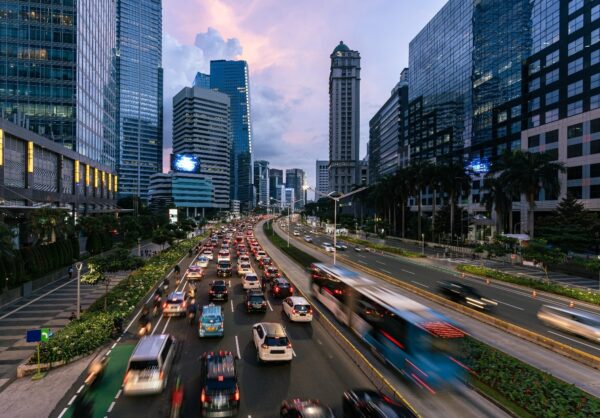The transportation industry is on the brink of a revolution, with technological advancements reshaping how we think about mobility. Central to this transformation is the integration of 5G technology into road design, a crucial step in enabling autonomous vehicles and smarter transportation systems. This intersection of innovation and infrastructure is poised to redefine the future of urban mobility. In these discussions, Melanie Wilson MPC has emphasized the importance of aligning technological advancements with thoughtful planning to maximize their impact.
The Power of 5G in Transportation
5G technology is a game-changer in the realm of communication, offering unprecedented speed and near-zero latency. These attributes make it an ideal enabler for autonomous vehicles, which rely on real-time data to operate safely and efficiently. Unlike traditional networks, 5G can handle massive data transfers with minimal delays, allowing vehicles to communicate seamlessly with each other, as well as with road infrastructure and traffic management systems.
This capability, often referred to as vehicle-to-everything (V2X) communication, is critical for the future of autonomous transportation. V2X enables vehicles to share data about their position, speed, and environment, creating a dynamic web of information that can be used to predict and prevent accidents. Additionally, this technology supports advanced driver-assistance systems (ADAS), which enhance safety for both autonomous and human-driven vehicles.
Designing Roads for a Connected Future
The incorporation of 5G technology into road infrastructure requires a fundamental shift in how roads are designed and built. Traditional roadways must evolve to support the complex communication networks needed for autonomous vehicles. This involves integrating sensors, communication nodes, and intelligent traffic management systems directly into the roadways.
Smart roads equipped with 5G infrastructure will serve as the backbone for connected transportation systems. These roads will collect and transmit data in real time, providing valuable insights to traffic operators and drivers. For instance, embedded sensors can monitor road conditions, detect hazards, and relay this information to vehicles, enabling them to adapt their routes or speeds accordingly.
Urban planners and engineers are already exploring innovative approaches to embed 5G technology into new and existing road networks. Examples include the installation of smart poles that house 5G transmitters, the use of road-mounted sensors to gather environmental data, and the deployment of intelligent traffic lights that adjust in response to real-time traffic patterns.
Benefits Beyond Autonomous Vehicles
The integration of 5G into road design offers benefits that extend far beyond autonomous vehicles. Improved traffic management is one significant advantage, as connected systems can optimize traffic flow by dynamically adjusting signals and providing drivers with real-time route updates. This not only reduces congestion but also minimizes fuel consumption and emissions, contributing to more sustainable transportation systems.
Enhanced safety is another critical outcome. By enabling vehicles to communicate with each other and with infrastructure, 5G-powered systems can help prevent collisions and reduce the severity of accidents. For example, if a vehicle detects an obstacle or a sudden change in road conditions, it can instantly alert nearby vehicles, giving them more time to react.
Moreover, the data collected from 5G-enabled roads can inform urban planning and policy decisions. By analyzing traffic patterns, authorities can identify bottlenecks, assess the impact of infrastructure projects, and implement measures to improve overall mobility.
Challenges and Considerations
While the potential of 5G-integrated roadways is immense, there are significant challenges to overcome. One of the primary obstacles is the cost of implementation. Building or retrofitting roads with 5G infrastructure requires substantial investment, which may be difficult for many municipalities to secure. Public-private partnerships could play a crucial role in addressing these financial hurdles.
Another challenge is ensuring the reliability and durability of the technology. Roads are exposed to harsh conditions, including extreme weather and heavy traffic, which can damage sensors and communication devices. Developing robust and long-lasting components is essential to the success of 5G-enabled road systems.
Additionally, privacy and security concerns must be addressed. The vast amount of data generated by connected transportation systems raises questions about how this information is stored, used, and protected. Clear regulations and safeguards will be necessary to maintain public trust and ensure that sensitive data is handled responsibly.
The Road Ahead
The integration of 5G into road design represents a monumental shift in transportation infrastructure. By enabling seamless communication between vehicles and infrastructure, 5G technology has the potential to make transportation safer, more efficient, and more sustainable. However, realizing this vision will require collaboration among governments, technology providers, and urban planners.
As cities and regions around the world begin to experiment with 5G-enabled roadways, the lessons learned from these initiatives will shape the future of transportation. From pilot programs to large-scale deployments, each step brings us closer to a connected transportation ecosystem where autonomous vehicles and smart systems work in harmony to improve mobility for all.
Ultimately, the success of this endeavor will depend on our ability to adapt and innovate. By embracing the possibilities of 5G and investing in forward-thinking road design, we can pave the way for a future where transportation is not just a means of getting from point A to point B, but a seamless and integrated part of our daily lives.
